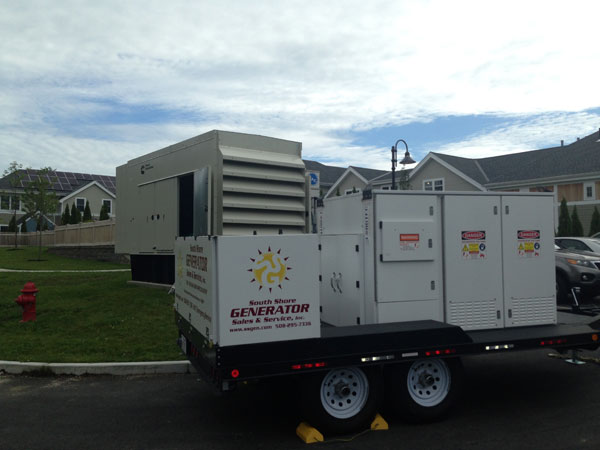
Whether it’s a home or office, consistency in power supply is a must. Particularly when you’re running the business in a commercial building, installing a good generator is a crucial part of your entire business plan.
When it comes to purchasing a generator, the residential generator is quite different than the commercial one. Usually, your home needs a light-to-moderate power back up, which can be covered by a smaller, portable generator.
On the other hand, a commercial building requires a power backup system that will ensure a minimal gap so that the electronic devices in your office don’t stop working.
The generator must have an automatic operation and an automatic voltage regulator, which will make sure there’s no interruption in power supply and has a continuously-controlled voltage to protect the equipment.
If you’re looking for a good generator for your industrial building, there are so many companies from where you can buy one.
Determining the right size generator for a commercial building is crucial as it supplies power for retail, manufacturing, and other commercial applications when there is a power cut.
The following factors will help you make decisions when it comes to sizing a commercial generator.
A voltage sag or voltage dip is a temporary drop that occurs when there is a short circuit or overload of electric motors. In an industry, there are different tolerance levels of voltage dip for different devices.
The generator must have the ability to deal with the maximum allowable voltage sag as it reduces the available voltage, thus affecting its regulator system.
Before you purchase a generator, consult with an expert and go through the spec sheets to determine the allowable drop in input voltage.
Since there is so much heavy equipment in an industrial building, there’s a high possibility of a frequency dip. It could be a huge problem due to the nominal frequency of a generator.
To solve this problem, you need to make sure that the generator can handle the maximum transient drop in both frequency and speed.
The ambients of the building where your business is located play a vital role in the performance of the generator because the combustion engine needs sufficient air for proper functioning.
It’s important to consider the humidity, temperature, and the altitude of the building while installing a generator. You will also get a checklist from the manufacturer where you will see the percentage of power shortage when the ambient condition is not good.
Not every business requires the same power supply. The more electric equipment you have in your company, the more backup power it will demand.
Besides, if the building is located in an area where there is no electricity, you may need a continuous power supply from the generator. It means you need a more powerful generator that might also be bigger in size.
Once you’re done considering the facts, you need to calculate the size of the generator you want to buy. You can use anything suitable from the following methods to find the right size.
The full load capacity method is a mathematical step that will help you determine the right generator size. It requires you to take full-load current measurements during peak usage to estimate the generator capacity.
Divide the total amps by 2 for single-phase current, and divide by 3 for three-phase current. Once you get the result, multiply it by the supply voltage, and then by 1000 to get the result in kilowatt.
Sum up the power used by each of the emergency safety systems as per the National Electrical Code (NEC) requirements. It will help you achieve full load kilowatts.
The monthly electricity bills play a vital role in determining the size of a commercial generator. Gather all the utility bills of the previous year and go through them.
Most of the time, the power usage is mentioned on your bill. Analyze the total power usage from those bills. It will help you to determine the highest peak demand to add a certain percentage for reserve capacity.
This method requires you to determine the starting current for the biggest motor, which is responsible for turning on and off. Multiply the number by the voltage for how the required watts. For other motors, just multiply the voltages for watts by the current.
Add the total watts and multiply by 1000 to get the result in kilowatts. Add 25% of the reserve capacity to size the generator.
The square footage measurement method is one of the best and simplest methods if you run a retail store or restaurant.
The following calculation will help you to determine the generator size for an industrial building:
The success and failure of a business rely on the functionality of the equipment you have in your office. A power outage is never accepted if you want to run your business successfully.
For assistance sizing a generator for your commercial building, contact South Shore Generator Sales & Service.
Source: urdesignmag.com
Whether your need is to power your business to keep on your production schedule or your home to keep your family safe and sound, South Shore Generator has the product diversity to meet all of your generator requirements. We are proud to sell and service generators from 2kW to 2000kW single set units and up to as large as 100MW utilizing Generac's innovative Modular Power Systems (MPS).